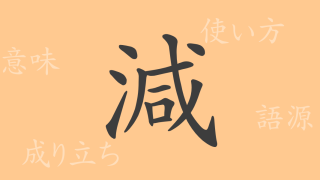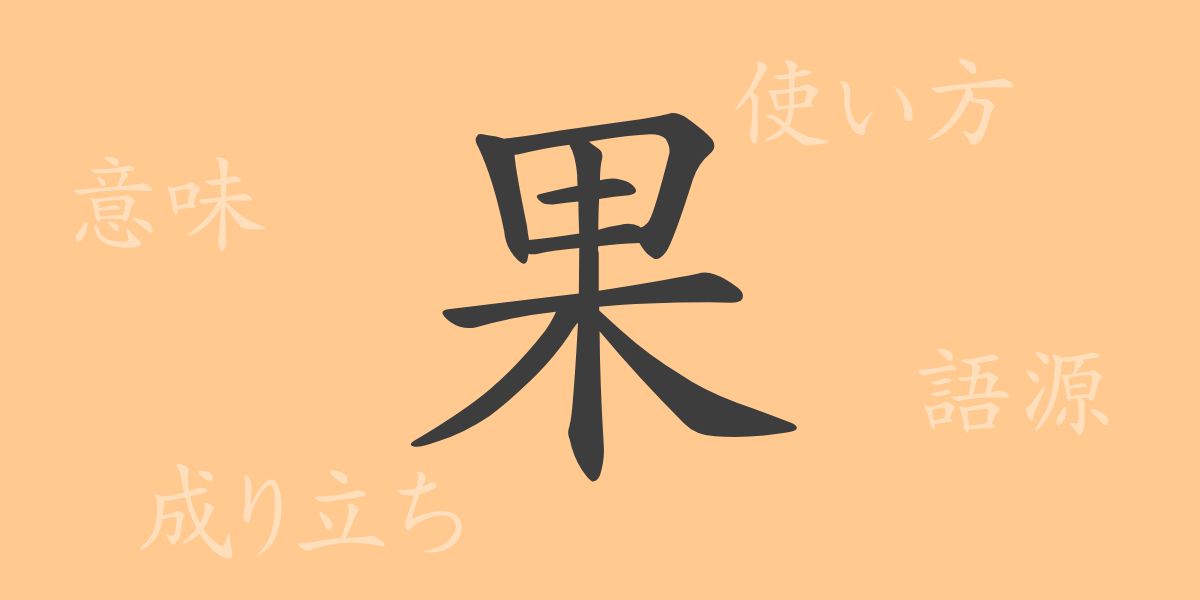Every character carries the culture and history of its nation. The Japanese kanji “果” (Ka) is no exception and has been used in many words since ancient times. In this article, we delve into the profound meaning of the kanji “果” (Ka), exploring its usage and origins. We aim to make this character more familiar to our readers by introducing its details extensively.
The Origin of 果 (Ka)
When exploring the origin of the kanji “果” (Ka), we can trace it back to ancient Chinese characters. In oracle bone script, it was depicted as a pictograph representing fruit on a tree. This form has evolved over time to the current kanji “果” (Ka). The character symbolizes the state of things coming to maturity and bearing fruit, as well as phenomena that appear as a result.
The Meaning and Usage of 果 (Ka)
The kanji “果” (Ka) means “to bear fruit” or “to yield results”. It is also often used to represent an “outcome,” indicating the state of something after it has been achieved. In usage, it functions as a noun, verb, and suffix, and is incorporated into various words.
Readings, Stroke Count, and Radical of 果 (Ka)
The kanji “果” (Ka) has multiple readings in Japanese.
- Readings: The on’yomi (Chinese reading) is “か” (Ka), and the kun’yomi (Japanese reading) includes “はたす” (Hatasu), “はてる” (Hateru), “はて” (Hate), and others.
- Stroke Count: The stroke count for “果” (Ka) is 8.
- Radical: The radical of “果” (Ka) is “木” (Ki), meaning “tree”.
Idioms, Phrases, and Proverbs Using 果 (Ka) and Their Meanings
There are numerous idioms, phrases, and proverbs that include the kanji “果” (Ka), showcasing the richness of the Japanese language. Here are a few examples:
- 果敢 (Kakan): A word that describes being brave and courageous.
- 成果 (Seika): The fruit or effect as a result of accomplishing something.
- 果実 (Kajitu): Fruit borne by trees or herbaceous plants. Metaphorically, it refers to the results of one’s efforts.
- 果断 (Kadan): Being decisive and not hesitating.
- Proverb “果報は寝て待て” (Kahou-ha-ne-te-ma-te): A proverb meaning that the fruits of one’s efforts will come naturally if one patiently waits without fretting.
Conclusion on 果 (Ka)
The kanji “果” (Ka), as its form suggests, carries meanings derived from the image of a tree bearing fruit. It symbolically captures the maturation and fruition of things, which is linked to concepts such as results and achievements. The words containing “果” (Ka) in Japanese are diverse, and each continues to be used as expressions rooted in the lives and values of the Japanese people. Understanding the rich meanings of this single character can lead to a deeper appreciation of the Japanese language.

























